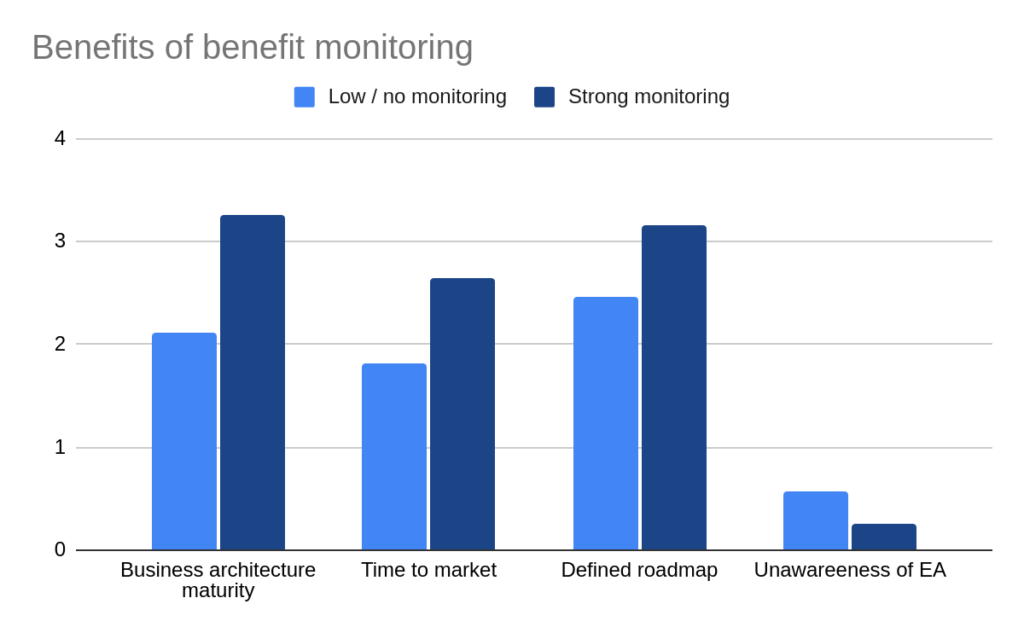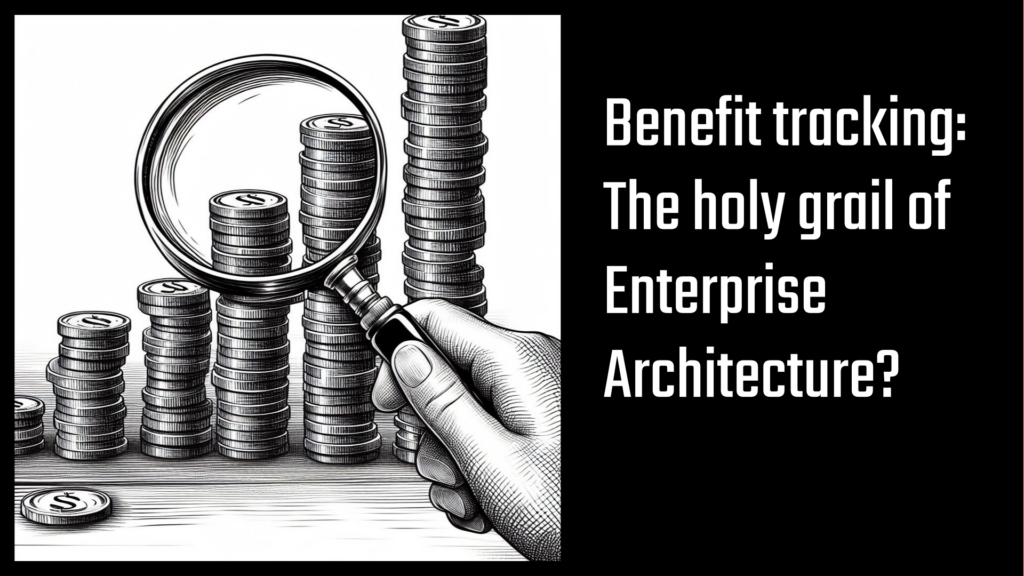Let’s talk about benefit monitoring. Most organizations will require you to promise some kind of value when spending money. The questions is how the organization is quantifying benefits and how the follow-up works. Before we get into the benefits of benefit monitoring we should define what we mean by benefit monitoring. This is my personal tier-list from worst to best practice:
- No benefit monitoring or allowing for cost avoidance: With the new software every employee will save 2 minutes of boot time. We are 500k employees – which will result in one million minutes saved each year. We all know that these kind of benefits will never be realized as it will neither be possible to measure the time saved nor will it be possible to capture these savings on the P&L as it is impossible to reduce everyone’s paycheck by 0.08% due to the new solution. And it should be clear to everyone that if a benefit is not measured it will not come.
- Benefit monitoring and measuring totals revenue goals: Measuring the impact of a technology solution on total sales volume is a nice try as it will at least make people think about the business value. Unfortunately for most improvements other effects, such as inflation, marketing effectiveness and other factors will be much more sizable than the technology improvement itself and it will be hard / impossible to tell if the initiative was a success or failure.
- Benefit monitoring and measuring OKRs: Instead of measuring the total sales improvement only measuring the improved conversion rate in one particular customer segment will be much more linked to the impact of the tech solution itself. The only downside is that it can sometimes be difficult to quantify the monetary impact – but this is where the experience of the decision makers comes into play.
- Benefits are directly incorporated into personal goals: This is clearly the most mature and best way to cope with benefits. If a department is planning to save 2 FTE with a new automation technology these 2 FTE should be gone from the person’s P&L in the year after rollout. If someone is promising a higher conversion by a technology this should be added as an additional target to that leader’s scorecard.
Why should architects for on benefits and benefit monitoring? If we loosely define architecture as the translation of business ideas into technology solutions that then impact the business model benefits are the ultimate end-to-end tracking device to see if architecture is working well.
In the following exhibit we see a selection of the benefits that organizations get that are monitoring benefits in a more rigorous way compared to others (t-Test with p<0.05 for all shown parameters):

First your business architecture tends to be in a much better shape. If you want to link benefits to processes and these processes to capabilities and applications the benefit tracking becomes a forcing device to establish a much better business architecture. And especially if the benefits are impacting the incentives of business stakeholders they will have a stronger incentive to participate in architecture discussions.
Time to market benefits quite a lot from benefit tracking. If you prioritized the features by the value and the benefit you want to get out of the project this reduces the amount of unnecessary bells and whistles and thus leads to a much faster time to market.
It also helps with defining the roadmap. When the roadmap is a value-driven rather than a technology-driven roadmap everyone will try to prioritize the features with the quickest value capture potential and we also see (not shown here) that the companies that monitor benefits spend more time on strategic planning.
Last but not least focusing on benefits gives more visibility to Enterprise Architecture – reducing the share of companies where the the rest of the company is not aware of EA – which creates another set of benefits.
As a conclusion if you are in Enterprise Architecture you should team up with your friends from finance and controlling and aim for a better, more mature benefit description and tracking.
